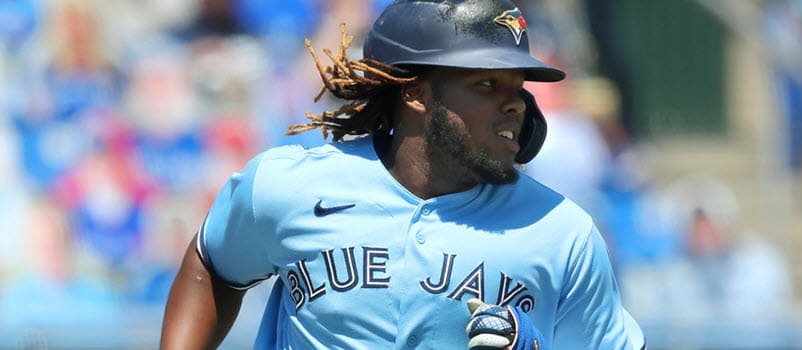This article is part of our MLB Barometer series.
We could tell at the time, but it's perhaps even more obvious now that some sense of normalcy has returned to the world: A 60-game season is very short. If we had the same 60-game schedule this season, several teams would already be a quarter of the way through their seasons. It felt strange when this was the case 15 games into last season, and it's just as strange today once we again can feel just how insignificant a slice of the season those 15 games are. (Unless you're a Yankees fan, that is, as the Bronx Bombers' 5-10 start has apparently conclusively proved that the team is doomed, if Twitter is any indication.)
The fresh reminder of just how short last season was forces a new look at the narratives we had to construct about players during draft season. "He clearly has a lot of talent, but he yet again fell short of expectations, so maybe he's not as good as we thought." "He looked so overmatched as a rookie, so I guess he's just not ready yet." "He's old, so we shouldn't be surprised that he's falling off hard." "He looked like he broke out in 2019, but he fell all the way back to earth in 2020, so I guess the breakout was a mirage."
To be fair, constructing those narratives was the correct thing to do, as long as you held yourself back from committing with 100 percent certainty to any of them. We can only
We could tell at the time, but it's perhaps even more obvious now that some sense of normalcy has returned to the world: A 60-game season is very short. If we had the same 60-game schedule this season, several teams would already be a quarter of the way through their seasons. It felt strange when this was the case 15 games into last season, and it's just as strange today once we again can feel just how insignificant a slice of the season those 15 games are. (Unless you're a Yankees fan, that is, as the Bronx Bombers' 5-10 start has apparently conclusively proved that the team is doomed, if Twitter is any indication.)
The fresh reminder of just how short last season was forces a new look at the narratives we had to construct about players during draft season. "He clearly has a lot of talent, but he yet again fell short of expectations, so maybe he's not as good as we thought." "He looked so overmatched as a rookie, so I guess he's just not ready yet." "He's old, so we shouldn't be surprised that he's falling off hard." "He looked like he broke out in 2019, but he fell all the way back to earth in 2020, so I guess the breakout was a mirage."
To be fair, constructing those narratives was the correct thing to do, as long as you held yourself back from committing with 100 percent certainty to any of them. We can only analyze the data that's presented to us, and refusing to update our opinions on players based on that data would be foolish. We should be prepared to do another mental update quite quickly this year, however, as 2020 simply didn't provide us with all that much data. Even if a player's poor season last year was fully supported by every underlying stat imaginable, two genuinely bad months is still just two months.
Many of the risers and fallers this week fit into that category. Their 2020 performances generally seemed very real. But we can't know what their stat lines would have looked like had they had a longer opportunity to dig themselves out of small-sample slumps. It's possible some of them are meaningfully different players than they were when we last saw them take the field, but it's also possible that their performances in the first month of this season are the performances they would have provided in the third month of last year had the schedule lasted 162 games. Stat lines can be very real but still not very predictive, which is a lesson we might learn quite frequently early this year.
RISERS
 Vladimir Guerrero, 1B, Blue Jays: Through the end of his age-21 season, Guerrero owned a 107 wRC+, the product of a .269/.336/.442 slash line. That wouldn't be a disappointment for just about any other 21-year-old on the planet, but for someone who carries the name of his Hall of Fame father and who was hyped as one of the best hitting prospects in recent memory, people were expecting more than an offensive output, which matched that of Derek Dietrich over the same stretch. Two years of Dietrich-level performance at that age of course don't portend a career full of that sort of numbers, but it wasn't clear exactly when the expected breakout would come. If Guerrero's first 16 games are any indication, that breakout is coming this year. His .389/.507/.667 slash line is excellent, and it's backed by his underlying numbers. Statcast gives him a .354 xBA and .626 xSLG, while he's walked as often as he's struck out. He's always hit the ball hard, but too many of his batted balls had been driven into the ground. He's seemingly fixed that this season, posting a 37.2 percent groundball rate after recording a 51.3 percent mark in his first two campaigns.
Vladimir Guerrero, 1B, Blue Jays: Through the end of his age-21 season, Guerrero owned a 107 wRC+, the product of a .269/.336/.442 slash line. That wouldn't be a disappointment for just about any other 21-year-old on the planet, but for someone who carries the name of his Hall of Fame father and who was hyped as one of the best hitting prospects in recent memory, people were expecting more than an offensive output, which matched that of Derek Dietrich over the same stretch. Two years of Dietrich-level performance at that age of course don't portend a career full of that sort of numbers, but it wasn't clear exactly when the expected breakout would come. If Guerrero's first 16 games are any indication, that breakout is coming this year. His .389/.507/.667 slash line is excellent, and it's backed by his underlying numbers. Statcast gives him a .354 xBA and .626 xSLG, while he's walked as often as he's struck out. He's always hit the ball hard, but too many of his batted balls had been driven into the ground. He's seemingly fixed that this season, posting a 37.2 percent groundball rate after recording a 51.3 percent mark in his first two campaigns.
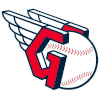 Shane Bieber, SP, Cleveland: You could certainly make a case that Bieber doesn't belong on this list, as it's awfully hard to "rise" when you were selected as a top-10 pick on average and were typically the third pitcher off the board. Bieber earns a spot here anyway, as his dominance to start the season suggests he could have a case to be the top pitcher taken next season. Jacob deGrom certainly isn't doing anything to lose his spot, but he'll be entering his age-34 season next year, so Bieber likely will have plenty of supporters should he continue to pitch the way he's been pitching. He's struck out 11 or more batters in each of his four starts this year, giving him a 41.0 percent strikeout rate to go with his 2.45 ERA and 0.92 WHIP. Dating back to last season, he now leads all qualified starters in strikeout rate (41.1 percent), ERA (1.86) and xFIP (2.11) while sitting tied for second in WHIP (0.88).
Shane Bieber, SP, Cleveland: You could certainly make a case that Bieber doesn't belong on this list, as it's awfully hard to "rise" when you were selected as a top-10 pick on average and were typically the third pitcher off the board. Bieber earns a spot here anyway, as his dominance to start the season suggests he could have a case to be the top pitcher taken next season. Jacob deGrom certainly isn't doing anything to lose his spot, but he'll be entering his age-34 season next year, so Bieber likely will have plenty of supporters should he continue to pitch the way he's been pitching. He's struck out 11 or more batters in each of his four starts this year, giving him a 41.0 percent strikeout rate to go with his 2.45 ERA and 0.92 WHIP. Dating back to last season, he now leads all qualified starters in strikeout rate (41.1 percent), ERA (1.86) and xFIP (2.11) while sitting tied for second in WHIP (0.88).
 J.D. Martinez, DH, Red Sox: Martinez blamed the loss of in-game video for some of his struggles last season. It was easy to dismiss that as a player simply making excuses, as he'd already seen his wRC+ drop from 170 in 2018 to 139 in 2019, so another significant drop in his age-32 season didn't seem all that surprising, even if few people would have expected him to plummet all the way down to a wRC+ of 77. It's worth noting, however, that he was complaining about the loss of video even before the start of the season, which does add a fair amount of credibility. He's added even more credibility to those claims with his dominant performances to start this season now that in-game video has returned. Through 13 games, he's hitting .364/.426/.764 and backing it up with a .306 xBA and .662 xSLG. He should still be expected to finish somewhere below his peak, but the 33-year-old version of the guy who hit .330 with 43 homers and 130 RBI in his age-30 season should still be an excellent player.
J.D. Martinez, DH, Red Sox: Martinez blamed the loss of in-game video for some of his struggles last season. It was easy to dismiss that as a player simply making excuses, as he'd already seen his wRC+ drop from 170 in 2018 to 139 in 2019, so another significant drop in his age-32 season didn't seem all that surprising, even if few people would have expected him to plummet all the way down to a wRC+ of 77. It's worth noting, however, that he was complaining about the loss of video even before the start of the season, which does add a fair amount of credibility. He's added even more credibility to those claims with his dominant performances to start this season now that in-game video has returned. Through 13 games, he's hitting .364/.426/.764 and backing it up with a .306 xBA and .662 xSLG. He should still be expected to finish somewhere below his peak, but the 33-year-old version of the guy who hit .330 with 43 homers and 130 RBI in his age-30 season should still be an excellent player.
 Jazz Chisholm, 2B, Marlins: Chisholm was almost a complete afterthought during draft season, finishing with an NFBC ADP of 484.8. It wasn't hard to understand why. You could forgive him for struggling last year, as he was a 22-year-old who had yet to reach Triple-A, but he didn't look anywhere close to big-league ready in his 21-game debut, hitting .161/.242/.321 with a 30.6 percent strikeout rate. He was still a highly rated prospect, so there was still reason to believe he'd reach his potential eventually, but there was little reason to believe he'd turn things around this dramatically so quickly. After winning the job by posting an .821 OPS in spring training, he's gone on to hit .325/.451/.675 through his first 14 games, backing that up with a .290 xBA and an incredible .724 xSLG. His speed, which is what caused many people to take him as a late-round lottery ticket even without much confidence in his bat, has shown up as well, as he's already stolen three bases.
Jazz Chisholm, 2B, Marlins: Chisholm was almost a complete afterthought during draft season, finishing with an NFBC ADP of 484.8. It wasn't hard to understand why. You could forgive him for struggling last year, as he was a 22-year-old who had yet to reach Triple-A, but he didn't look anywhere close to big-league ready in his 21-game debut, hitting .161/.242/.321 with a 30.6 percent strikeout rate. He was still a highly rated prospect, so there was still reason to believe he'd reach his potential eventually, but there was little reason to believe he'd turn things around this dramatically so quickly. After winning the job by posting an .821 OPS in spring training, he's gone on to hit .325/.451/.675 through his first 14 games, backing that up with a .290 xBA and an incredible .724 xSLG. His speed, which is what caused many people to take him as a late-round lottery ticket even without much confidence in his bat, has shown up as well, as he's already stolen three bases.
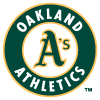 Jed Lowrie, 2B, Athletics: You can be forgiven if you saw Lowrie's name in a box score this season and were surprised to learn he was still in the league. After signing a two-year, $20 million deal with the Mets in 2019, he went on to make eight plate appearances in 2019 and zero in 2020 while battling a constant stream of leg injuries. Heading into his age-37 campaign, it wouldn't have been remotely surprising had he chosen to retire. Oakland brought him in as a nonroster invitee, however, and he's won not just a roster spot but a true starting role, finding himself in the lineup in 13 of the team's 16 games. The veteran has rewarded his former team's faith with a strong start to the year, hitting .333/.410/.519, with Statcast's .373 xBA and .693 xSLG suggesting that he's actually gotten quite unlucky. While it would be a surprise if he maintained this level of performance, there's reason to believe he'll be a very serviceable option as long as he can stay on the field, as he hit .272/.356/.448 with a combined 37 homers in 2017 and 2018.
Jed Lowrie, 2B, Athletics: You can be forgiven if you saw Lowrie's name in a box score this season and were surprised to learn he was still in the league. After signing a two-year, $20 million deal with the Mets in 2019, he went on to make eight plate appearances in 2019 and zero in 2020 while battling a constant stream of leg injuries. Heading into his age-37 campaign, it wouldn't have been remotely surprising had he chosen to retire. Oakland brought him in as a nonroster invitee, however, and he's won not just a roster spot but a true starting role, finding himself in the lineup in 13 of the team's 16 games. The veteran has rewarded his former team's faith with a strong start to the year, hitting .333/.410/.519, with Statcast's .373 xBA and .693 xSLG suggesting that he's actually gotten quite unlucky. While it would be a surprise if he maintained this level of performance, there's reason to believe he'll be a very serviceable option as long as he can stay on the field, as he hit .272/.356/.448 with a combined 37 homers in 2017 and 2018.
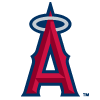 Jared Walsh, 1B, Angels: Walsh is different from several names above him on this list, who are looking good early on after disappointing last season. Prior to 2020, he was most notable for his attempted two-way conversion, as he didn't look like much more than a Quad-A option at first base. In 32 games last season, however, he hit .293/.324/.646 with nine homers. His .354 ISO was the highest mark among players with at least 100 plate appearances, and you have to drop all the way down to Trea Turner in 47th place (.253 ISO) to find someone with a strikeout rate as low as his 13.9 percent mark. Statcast suggested he overachieved somewhat but was still quite a good hitter, giving him a .272 xBA and .528 xSLG. Those who bought into his small-sample success have certainly been rewarded thus far, as he's hitting .341/.426/.707 with four homers in his first 12 games, while keeping his strikeout rate quite low at 17.0 percent. He's also started five games in right field due to Dexter Fowler's season-ending knee injury, so he may be able to add additional positional flexibility in most formats soon if he doesn't have it already.
Jared Walsh, 1B, Angels: Walsh is different from several names above him on this list, who are looking good early on after disappointing last season. Prior to 2020, he was most notable for his attempted two-way conversion, as he didn't look like much more than a Quad-A option at first base. In 32 games last season, however, he hit .293/.324/.646 with nine homers. His .354 ISO was the highest mark among players with at least 100 plate appearances, and you have to drop all the way down to Trea Turner in 47th place (.253 ISO) to find someone with a strikeout rate as low as his 13.9 percent mark. Statcast suggested he overachieved somewhat but was still quite a good hitter, giving him a .272 xBA and .528 xSLG. Those who bought into his small-sample success have certainly been rewarded thus far, as he's hitting .341/.426/.707 with four homers in his first 12 games, while keeping his strikeout rate quite low at 17.0 percent. He's also started five games in right field due to Dexter Fowler's season-ending knee injury, so he may be able to add additional positional flexibility in most formats soon if he doesn't have it already.
FALLERS
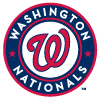 Stephen Strasburg, SP, Nationals: Strasburg is obviously a talented pitcher, but it was hard to fully trust him during draft season after he missed most of last year with carpal tunnel neuritis, a problem that eventually required surgery. It wasn't clear how much the uncommon ailment would affect him going forward. His hand hasn't been a problem so far, but he's already onto his second injury of the year. He left a spring start in mid-March with what turned out to be a ruptured tendon in his calf, though, strangely enough, the particular tendon his tore isn't one that modern humans really need, so he was able to avoid a trip to the injured list. He made it just two starts into the year before landing on the injured list with shoulder inflammation and has no clear timeline to return. (Modern humans, as it turns out, do indeed need shoulders, especially if they make their living throwing baseballs.) Even once he's back in game action, the odds of a pitcher with his track record avoiding any more injuries the rest of the way seem slim.
Stephen Strasburg, SP, Nationals: Strasburg is obviously a talented pitcher, but it was hard to fully trust him during draft season after he missed most of last year with carpal tunnel neuritis, a problem that eventually required surgery. It wasn't clear how much the uncommon ailment would affect him going forward. His hand hasn't been a problem so far, but he's already onto his second injury of the year. He left a spring start in mid-March with what turned out to be a ruptured tendon in his calf, though, strangely enough, the particular tendon his tore isn't one that modern humans really need, so he was able to avoid a trip to the injured list. He made it just two starts into the year before landing on the injured list with shoulder inflammation and has no clear timeline to return. (Modern humans, as it turns out, do indeed need shoulders, especially if they make their living throwing baseballs.) Even once he's back in game action, the odds of a pitcher with his track record avoiding any more injuries the rest of the way seem slim.
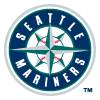 Dylan Moore, 2B/OF, Mariners: Moore was one of the more interesting players during draft season. A fringe prospect who struggled to a .206/.302/.389 line as a 26-year-old rookie in 2019, there wasn't really much reason to think about him heading into last year. In the shortened season, which was made even shorter for him due to a wrist injury, he went on to hit eight homers and steal 12 bases (tied for fourth in the league) while posting a .255/.358/.496 slash line in 38 games. While it would be tempting to write that off as a small-sample blip driven mostly by good luck, his .249 xBA and .459 xSLG suggested that it was mostly earned. Given the scarcity of steals these days, that was enough for a large number of fantasy players to take an interest in him, earning him an NFBC ADP of 120.9. Unfortunately, even if a player legitimately earns his small-sample success, that doesn't necessarily mean he'll remain that successful in the future. Moore has been awful through 55 plate appearances this season, hitting .128/.236/.255. A .179 BABIP is undoubtedly part of that, but so is his 34.5 percent strikeout rate. His xBA of .194 indicates that even some better luck won't be enough to fix his issues.
Dylan Moore, 2B/OF, Mariners: Moore was one of the more interesting players during draft season. A fringe prospect who struggled to a .206/.302/.389 line as a 26-year-old rookie in 2019, there wasn't really much reason to think about him heading into last year. In the shortened season, which was made even shorter for him due to a wrist injury, he went on to hit eight homers and steal 12 bases (tied for fourth in the league) while posting a .255/.358/.496 slash line in 38 games. While it would be tempting to write that off as a small-sample blip driven mostly by good luck, his .249 xBA and .459 xSLG suggested that it was mostly earned. Given the scarcity of steals these days, that was enough for a large number of fantasy players to take an interest in him, earning him an NFBC ADP of 120.9. Unfortunately, even if a player legitimately earns his small-sample success, that doesn't necessarily mean he'll remain that successful in the future. Moore has been awful through 55 plate appearances this season, hitting .128/.236/.255. A .179 BABIP is undoubtedly part of that, but so is his 34.5 percent strikeout rate. His xBA of .194 indicates that even some better luck won't be enough to fix his issues.
 Rafael Montero, RP, Mariners: Montero looked like a solid midtier closer during draft season. He was far from the most talented pitcher to own a closer role, but he at least appeared to have a firm grip on the job, as the Mariners didn't seem to have any other compelling options. We're not even three weeks into the season, however, and he's already lost his job. His case serves as a valuable reminder that even if a team doesn't have any other compelling options, a closer still has to pitch well himself to remain in the role, so none of the, "he's not great, but he's all they have" guys should ever really be considered all that safe. Montero pitched his way out of the ninth after blowing three of his first five save chances. His 3.24 ERA is actually quite respectable, and it's not as though Kendall Graveman and Keynan Middleton, who have each now recorded a pair of saves of their own, are talented enough to run away with the job. It's certainly possible Montero works his way back into the ninth inning before too long, but he won't have much job security if and when that happens, which isn't a good thing for a guy who seemed to have job security and very little else.
Rafael Montero, RP, Mariners: Montero looked like a solid midtier closer during draft season. He was far from the most talented pitcher to own a closer role, but he at least appeared to have a firm grip on the job, as the Mariners didn't seem to have any other compelling options. We're not even three weeks into the season, however, and he's already lost his job. His case serves as a valuable reminder that even if a team doesn't have any other compelling options, a closer still has to pitch well himself to remain in the role, so none of the, "he's not great, but he's all they have" guys should ever really be considered all that safe. Montero pitched his way out of the ninth after blowing three of his first five save chances. His 3.24 ERA is actually quite respectable, and it's not as though Kendall Graveman and Keynan Middleton, who have each now recorded a pair of saves of their own, are talented enough to run away with the job. It's certainly possible Montero works his way back into the ninth inning before too long, but he won't have much job security if and when that happens, which isn't a good thing for a guy who seemed to have job security and very little else.
 Julian Merryweather, RP, Blue Jays: The Blue Jays have provided us all with a lesson on the futility of chasing saves. Kirby Yates looked like a potential top-tier closer when he joined the team as a free agent, but he blew out his elbow in late March. That sent everyone flocking to Jordan Romano despite the Blue Jays never coming close to confirming him as the closer. When it was instead Merryweather who picked up a pair of early saves, the fantasy world jumped over to him. It's possible he was in line to pick up most of Toronto's saves this year, but he's since gone down with an oblique strain, which reportedly is fairly serious. With Romano also sidelined with an elbow issue, it looks like Rafael Dolis will close in Toronto for now. Anyone who feels confident Dolis will remain in the role is probably overly optimistic, however. The role could go to Romano once he's healthy, or it could even go back to Merryweather once he's eventually ready to go. There's no particular reason to believe the ninth inning will be Merryweather's once he returns, however, so it's difficult to hold onto him in most formats.
Julian Merryweather, RP, Blue Jays: The Blue Jays have provided us all with a lesson on the futility of chasing saves. Kirby Yates looked like a potential top-tier closer when he joined the team as a free agent, but he blew out his elbow in late March. That sent everyone flocking to Jordan Romano despite the Blue Jays never coming close to confirming him as the closer. When it was instead Merryweather who picked up a pair of early saves, the fantasy world jumped over to him. It's possible he was in line to pick up most of Toronto's saves this year, but he's since gone down with an oblique strain, which reportedly is fairly serious. With Romano also sidelined with an elbow issue, it looks like Rafael Dolis will close in Toronto for now. Anyone who feels confident Dolis will remain in the role is probably overly optimistic, however. The role could go to Romano once he's healthy, or it could even go back to Merryweather once he's eventually ready to go. There's no particular reason to believe the ninth inning will be Merryweather's once he returns, however, so it's difficult to hold onto him in most formats.

